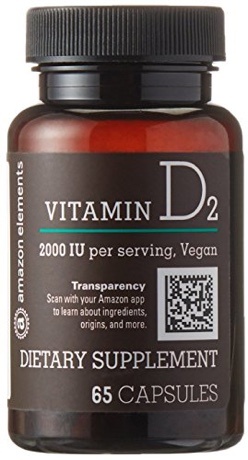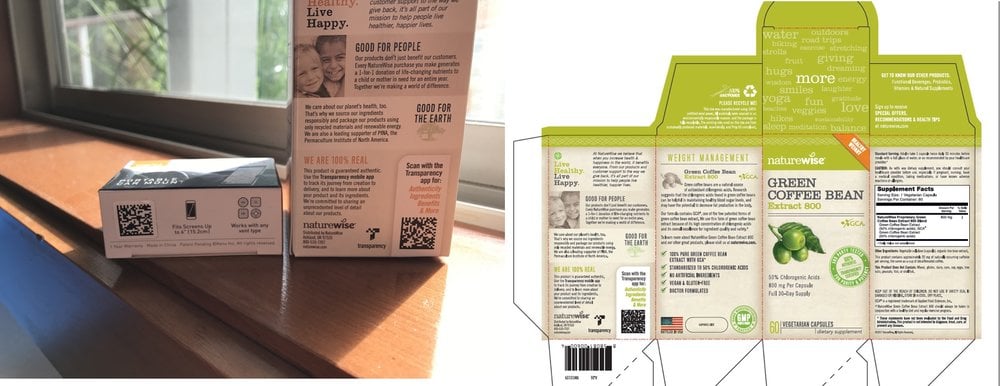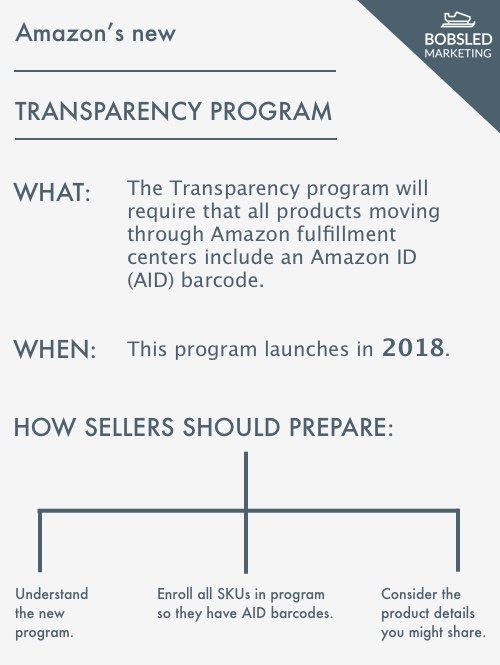Amazon is currently piloting its Transparency program to solve counterfeit product and unauthorized seller issues; the program will gradually replace the current “brand gating” approach. In the near future, any item arriving in an Amazon fulfillment center without the necessary unique 26-digit Transparency program code will be considered counterfeit. That’s Amazon’s eventual goal, and the company will progressively integrate all Vendor Central, Vendor Express, and Seller Central products into the program until it’s part of every seller’s workflow.
Before now, a legitimate brand owner wishing to be considered the authoritative owner of all new products under SKUs belonging to that brand (e.g., Samsung wanting to be considered the brand owner for all new Samsung TVs sold on Amazon) could file for brand gating. This security feature gave the brand owner final authority on things pertaining to that brand and let them choose whether to grant approval to other parties looking to sell a given item. (Brand gating only restricts sellers of new items; anyone can sell used items on Amazon.)
 On the left: An example of a product with the proper ID
On the left: An example of a product with the proper ID
In the past, if a product was un-gated in the relevant category or ASIN level, or if the brand wasn’t gated at all, then anyone could put an offer on an existing product page including sellers far removed from the actual brands in question. Even brand owners with gated goods have sometimes been in this situation: Despite being gated, their products have been sold by persistent and knowledgeable sellers who have managed to apply and get accepted to sell the product (these are unauthorized sellers, not necessarily counterfeiters).
Before the launch of the Transparency program, sellers had few real options other than doing a “test buy” of the suspicious counterfeit product themselves and then filing an infringement report with Amazon and hoping to hear back welcome news. Amazon’s new Brand Registry effort improved upon this by ending the test buy requirement and making a new search tool available for finding infringements. However, the Brand Registry program is a recent development, and it’s too soon to tell whether it’s actually an improvement on brand gating.
Simply put, brand gating is not a sustainable solution to the problem, and it’s easy to understand why Amazon is coming up with new programs to address the issues of counterfeit goods and unauthorized sellers.
Facts and figures
Amazon launched a beta version of the Transparency program in March 2017, so it’s very much in its early days. How sellers may be affected is still undetermined, but we do have some information to share.
Starting in 2018, as the program really takes off, fees are expected to vary between $0.01 and $0.05 per unit scanned, with variations depending on the level of service requested and with discounts available for larger volumes (in the millions of items).
At the moment, the Amazon Transparency program is only available to Amazon’s internal brands and a handful of external early adopter brands Amazon has invited to participate in the pilot. (Check out a few examples from Kenu, Amazon Elements and Moby.) As mentioned, though, the company seems committed to eventually having every brand and every seller comply with the requirements of this program.
Logistics
Every item shipped to Amazon will be identifiable by its Amazon Identifier (AID)—a unique, encrypted 26-digit alphanumeric code that will be applied as a 2-D barcode on a product’s outer packaging.
 Above: Packaging samples displaying the Transparency QR code and logo.
Above: Packaging samples displaying the Transparency QR code and logo.
Changing all product packaging is no small endeavor, so existing Amazon merchants will be given a grace period for fully implementing the new Transparency barcodes on all goods. This is known as a “flushing period,” the time during which the brand works through the remainder of its existing, non-compliant inventory items—the ones that lack the new barcodes. The exact details of this transition period will be worked out between merchants and Amazon on a case-by-case basis, but the main point is that everything without an AID code must go.
During the flushing period, Amazon will notify any sellers of newly enrolled products that they will need the new codes in order to sell in the future. After the period has passed, Amazon will only accept products that have the new AID codes—even if they come directly from a manufacturer or legitimate brand owner. Importantly, it’s entirely possible that in the future, brands will be able to use the Transparency program to enforce distribution or exclusivity agreements to some extent. However, it’s still unclear just how that might play out since Transparency is meant for removing products now considered counterfeit, not enforcing distribution agreements. As the program opens up to more brands in 2018, this will become clearer.
How does the Transparency program affect non-Amazon channels?
This is an Amazon-based program; as long as your inventory goes through an Amazon fulfillment center, the rules of the program apply to you.
If you’re only looking to fulfill orders placed through Amazon, the Transparency program will simply become another part of your routine. However, if you use Amazon’s fulfillment services to send out orders that come through other sales channels, just keep in mind that even non-Amazon orders have to comply if you want Amazon to fulfill the order.
If your brand sells and fulfills orders through other platforms and marketplaces, those will be unaffected by this program (although if it works well for Amazon, perhaps other companies will roll out similar programs).
How far does Transparency go?
The Transparency program introduces openness to all parties involved. Even customers can see behind the scenes. As this Amazon page shows, customers can see whether a given product is counterfeit or not, at least if they download Amazon’s new Transparency app. All it takes is scanning the barcode on the product’s external packaging. Right away, customers can verify the authenticity of a product and see its journey from the point of manufacturing to their front door.
What’s available for a customer to see depends on what information a manufacturer has uploaded to the Transparency database, so it will vary across products. As eComEngine detailed, basic details like place and date of manufacture and product expiration date will be included, along with additional facts like ingredients. It’s even possible that disclosure of more information will become a point of competition between brands as they vie to be seen as more customer friendly.
If you'd like a handy visual guide to Transparency, here's the gist of it:

A new step
All in all, this program represents a big new step in Amazon’s effort to cut down on counterfeiting and unauthorized selling. These issues are perennial plagues in the e-commerce world, so the advent of a program of this type was probably inevitable. Once brands understand how to implement it, the Transparency program isn’t likely to frustrate legitimate sellers.
.png)
